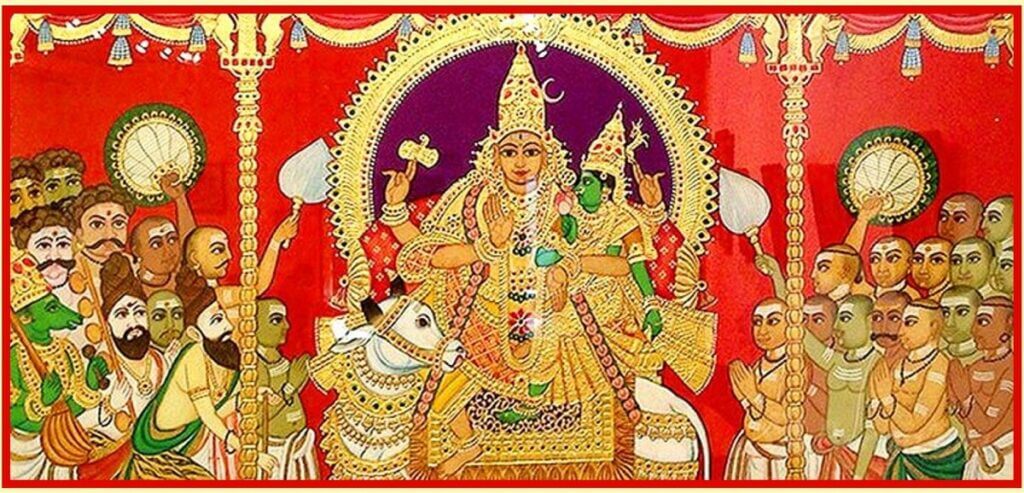
Technique & Characteristic
Mysore Paintings are characterized by delicate lines, intricate brush strokes, graceful delineation of figures and the discreet use of bright vegetable colours and lustrous gold leaf. More than mere decorative pieces, the paintings are designed to inspire feelings of devotion and humility in the viewer. The painter’s individual skill in giving expression to various emotions is therefore of paramount importance to this style of painting.
The first stage of Mysore Painting was to prepare the ground; paper, wood, cloth or wall grounds were variously used. The paper board was made of paper pulp or waste paper, which was dried in the sun and then rubbed smooth with a polished quartz pebble. If the ground was cloth it was pasted on a wooden board using a paste composed of dry white lead mixed with gum and a small quantity of gruel.
Making Mysore Paintings
A number of steps are involved in the process of producing a Mysore painting. The first step requires the artist to make a preliminary sketch of the image on the base, which comprises of a cartridge paper pasted on a wooden base. Thereafter, he makes a paste of zinc oxide and Arabic gum, known as ‘gesso paste’. This paste is used to give a slightly raised effect of carving to those parts of the painting that require embellishments and is allowed to dry. Then, gold foil is pasted onto the surface. The rest of the painting is prepared with the help of watercolors. After the painting is fully dried, it is covered with a thin paper and rubbed lightly with a smooth soft stone.
